Lot No : 51
Auction No : 7
Hunnic Rulers of Kashmir – Toramana II (c. 540-570 CE), Copper Unit, 7.10 grams, Large Flan, Obv: A seated goddess facing forward, with the Brahmi inscription Jaya to the right, and a vase of plenty (kalasa) at the top right.Rev: The king is depicted standing, facing forward, holding a sceptre in his raised left hand while offering at an altar with his right. The Brahmi legend reads Sri Toramana. AIC#1983, Rare in this Condition The Hun tribes consolidated their rule over Bactria in the 4th century CE and expanded into the Kabul Valley, Gandhara, and Taxila in the early 5th century. Toramana II (c. 540-570 CE), a prominent Hun king, played a pivotal role in this expansion, leading significant incursions into northern India, including parts of the Ganges Valley and Central India. Influenced by Gupta, Kushana, and Kota Punjab coinage, his reign marked the peak of Hun dominance. Following defeats by local rulers such as Vishnuvardana and Baladitya, the Huns withdrew back to Gandhara and Kashmir.
Lot No : 52
Auction No : 7
Samatata Region – Gold Dinar, Gupta Coin Design, 'Ashwamedha' Type (550-650 AD), ECB SAM5.3, 5.52g, Obv: A stylized depiction of a nimbate king in the 'archer' type, holding a bow in his right hand and an arrow in his left. Behind him, an executed 'Shankha' standard is visible, with the Brahmi letter Shri to the left of his head. Below the king’s bow hand is a small horse figure, with Brahmi letters Deya/Dasa above it. Rev: A stylized female figure stands holding a ball-like object in her hand, with curvilinear drapes behind her. The legend appears in the right field. Note: Very Fine condition and Very Rare. While Bose and Nasir interpret the letters above the horse as Dasa, Deya (meaning 'to be given') seems more fitting, considering these coins may have been minted for the Ashwamedha ritual.
Lot No : 53
Auction No : 7
Post-Gupta Bengal – Imitative Gold Coinage of the Mainamati-Comylla Region (Samatata) (c.600-700 CE), Gold Dinar, 6.30grms, Obv: A Gupta-style archer king, with an indistinct standard in the background. Rev: A nimbate goddess stands in the Tribhanga pose, with her hand outstretched. A pseudo-inscription is present to the left, while the Brahmi letters Shri and Ti/Bhi are on the right. Note: Very Fine condition, with edge marks, and considered Rare.
Lot No : 54
Auction No : 7
Vardhanas of Thanesar and Kanauj – Siladitya Harshavardhana (c. 606-647 CE), Silver Drachm, 2.30 grams, Obv: Bust of King Siladitya facing left. Rev: Garuda, with the Brahmi legend: Vijitavannir-avanapati-sri-siladitya-divam-jayati. This coin is in exceptional condition, with intricate details clearly visible on both sides, making it a rare and remarkable specimen. In the early 7th century, the Vardhanas of Thanesar, led by Harshavardhana (606-647 CE), overtook the Maukhari territories, with Kanauj becoming the new center of his expanding kingdom. Despite conflicts with the Chalukya king Pulakeshin II, Harshavardhana’s realm fragmented after his death, with Yasovarman later ruling Kanauj. The Vardhana coins, particularly those inscribed sri-siladitya, are considered issues of Harshavardhana
Lot No : 55
Auction No : 7
Chalukyas of Kalyana, Jayasimha II Jagadekamalla (c. 1015-1043AD), Gold Pagoda, 3.40grms, Obverse: Four main symbols, 1* Sun? & Moon, 2* Kannada Shri, 1* Corrupt but clear Haleganada Legend Shri JaGaDe, Reverse: Interesting counter mark, Extra Fine+, Rare
Lot No : 56
Auction No : 7
Karkotakas of Kashmir, Pratapaditya(500AD), Gold Dinar, 7.40grms, Obv: Seated Goddess with nigari legend Sri Pratapaditya, Rev: A standing king, Extra Fine+, Very Scarce. The Karkotaka dynasty ruled Kashmir from the 7th to 9th century CE, with Pratapaditya as one of its later rulers. Though less renowned than Lalitaditya, he maintained regional stability. The dynasty supported Shaivism, Buddhism, and temple architecture, leaving a lasting cultural legacy before being succeeded by the Utpala dynasty
Lot No : 57
Auction No : 7
Paramaras of Vidharbha, Jagadeva (1200AD), Gold Pagoda, 3.70 grms, Uniface, Obverse: 4 punches, 1) A temple showing human figure/ Some claim Lord Shiva, 2) Two Geometrical Symbol similar to the letter "D" but represents Shri, 3) Shri Jaga Deva in Nagari, An Extraordinary Specimen with all four punches clearly visible, Rare Jagadeva, a ruler of the Paramaras of Vidarbha in the 11th–12th centuries, is known from inscriptions highlighting his military victories and religious donations. Though less powerful than the Malwa Paramaras, he maintained regional control and was celebrated for valor and patronage of temples and Brahmins.
Lot No : 58
Auction No : 7
Chalukyas of Kalyana, Jayasimha II Jagadekamalla (c. 1015-1043AD), Gold Pagoda, 3.50grms, Obverse: Nine main symbols, 1. Four punches of Lion with raised Paw, 2. Two Punches Kannada Shri, 3. Two punches Kannada legend Ja ga de ka, 4. Main center punch of Hanuman with a long tail which comes in front of his face and reaches knees, Extra Fine+, Very Rare Jayasimha II was a capable and resilient ruler who faced formidable adversaries from both the north and south. He defended his realm against the Cholas of Tanjore and the Paramaras, securing a notable victory around 1028 CE at the Battle of the Godavari River, where he repelled a powerful coalition led by Rajendra Chola, Bhoja of Malwa, and Gangeyadeva of the Kalachuris. His reign marked a cultural renaissance, particularly in Kannada literature. He supported scholars like Durgasimha and Chavundaraya II, while Jain scholar Vadiraja contributed important Sanskrit works. His queen, Suggaladevi, followed the saint-poet Devara Dasimayya, reflecting deep spiritual engagement.
Lot No : 59
Auction No : 7
Western Gangas, Gaja Hana, Gajapati Gold Pagoda, 3.80 grms, Obverse: An elephant facing right, chewing on sugarcane, adorned with royal jewelry around its neck, with a flower positioned behind its back and nestled between its legs, Reverse: A floral design showcasing each flower distinctly and intricately detailed. "There is a division of opinion among experts regarding these coins—some deem them to be forgeries, whereas others attribute them to the Ganga period, proposing that the king may have commissioned local jewellers for their minting." Extra Fine, Deep Strike, Rare
Lot No : 60
Auction No : 7
VishnuKundin Dynasty, Copper Unit, 2.00 grms, Obverse: Bull facing right with some brahmi legend above the animal, Reverse: Shanku chakra, Very Fine

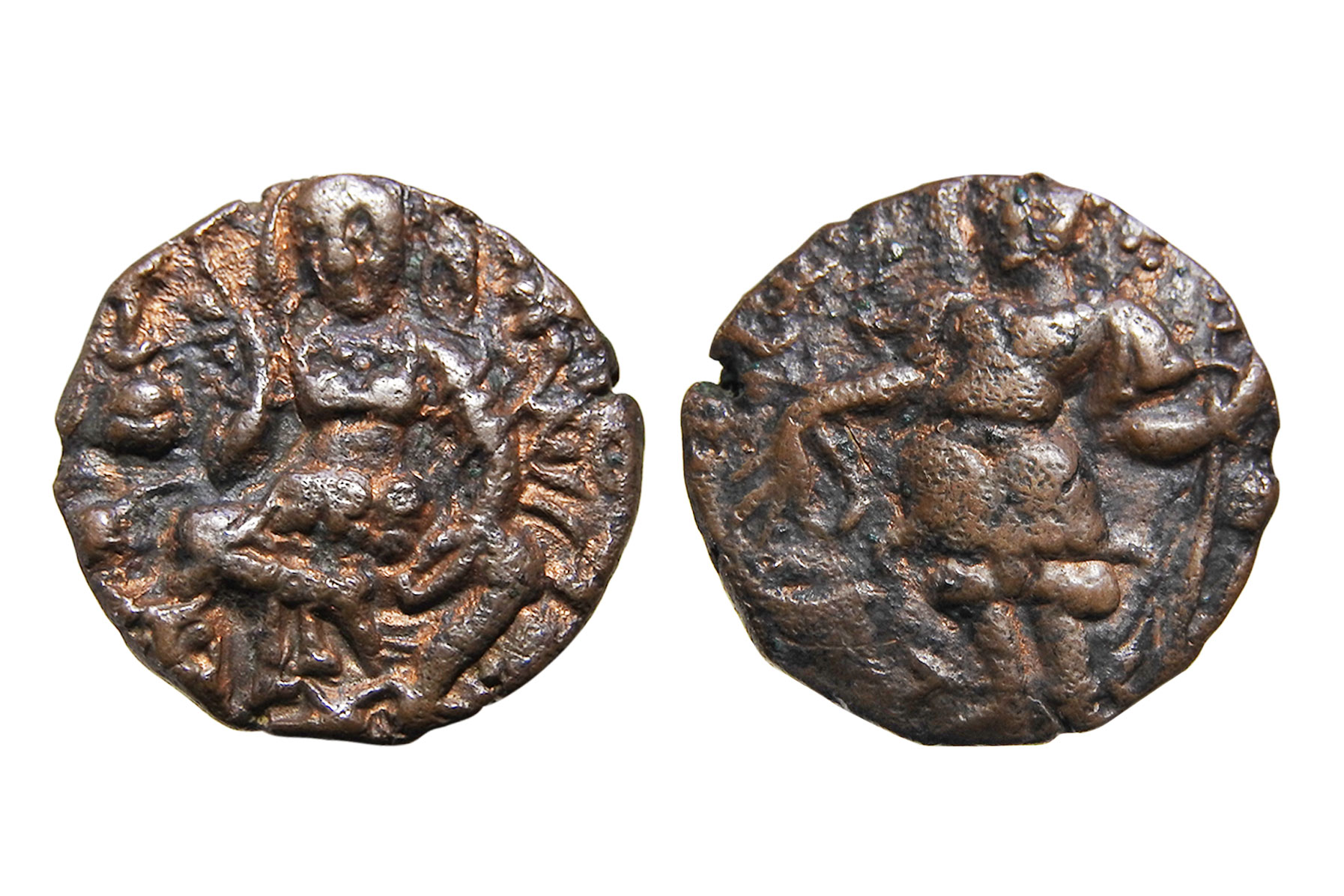
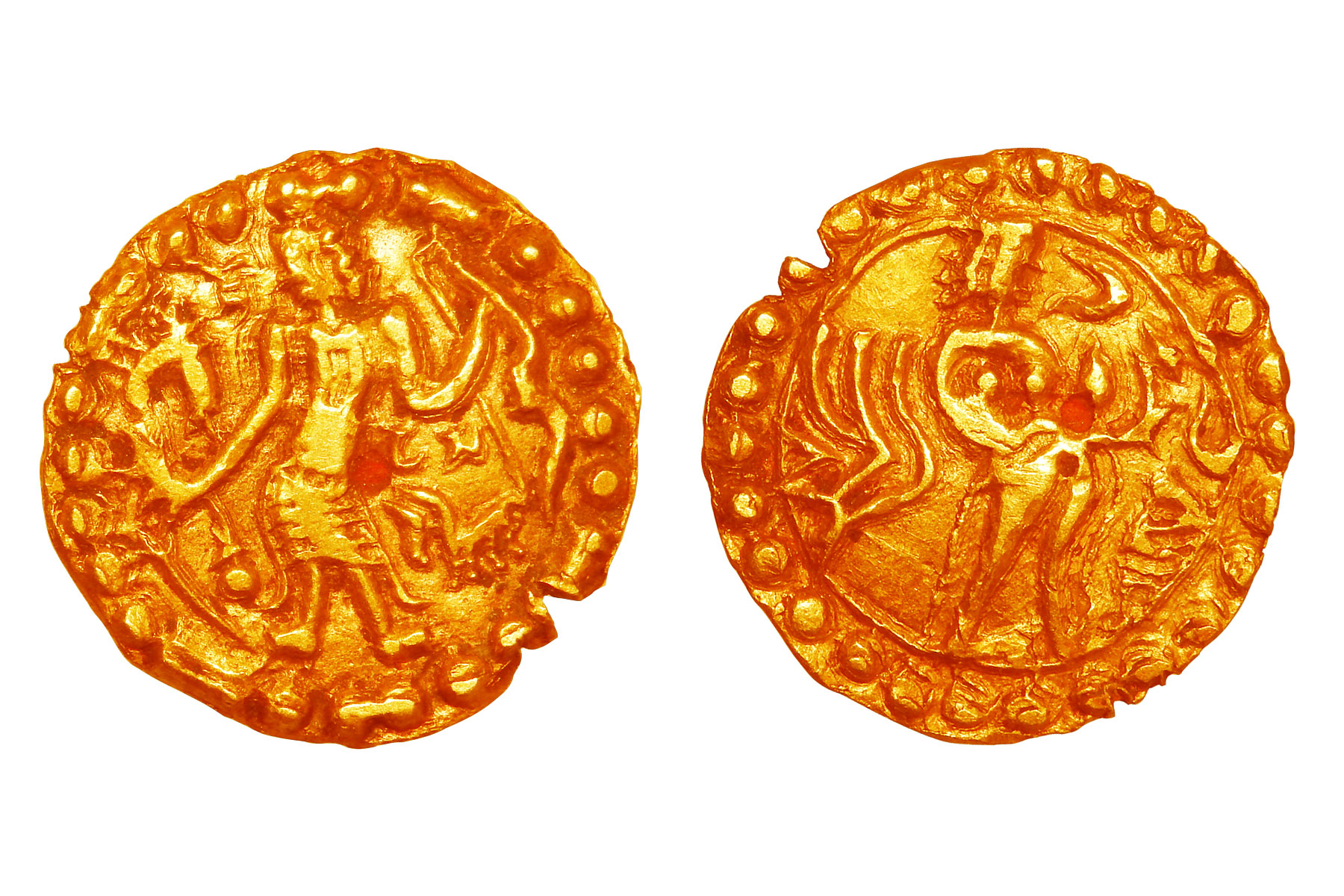
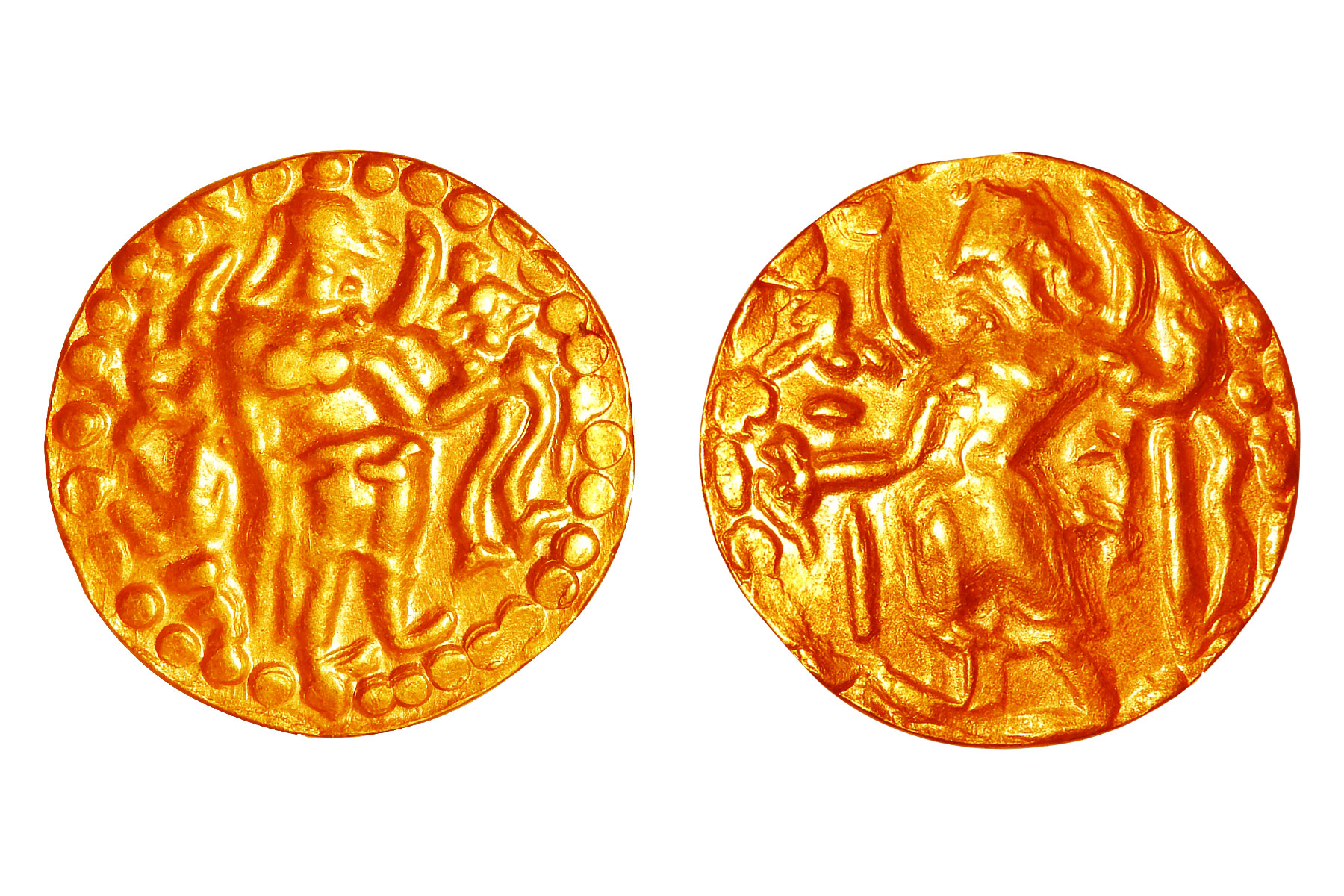
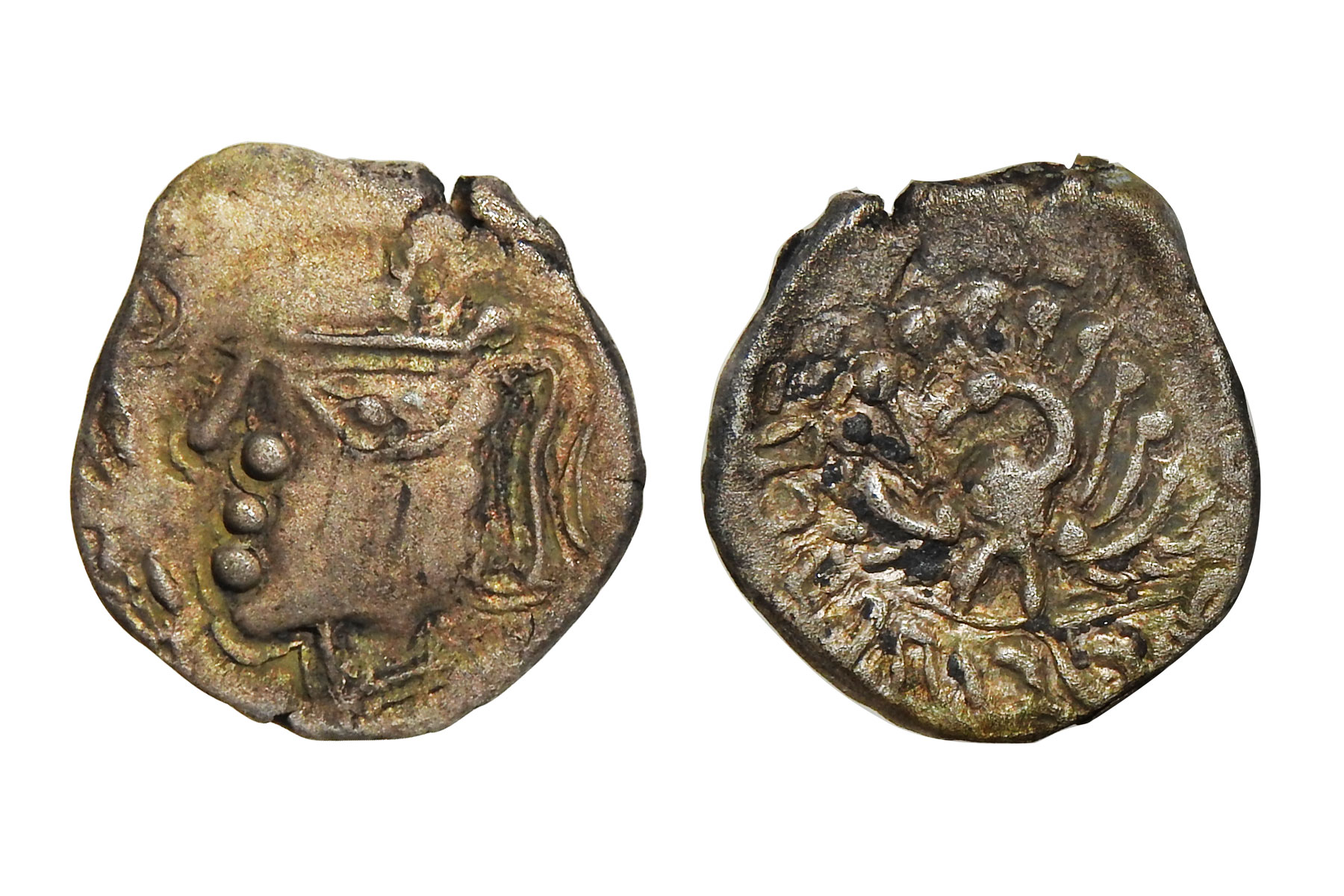

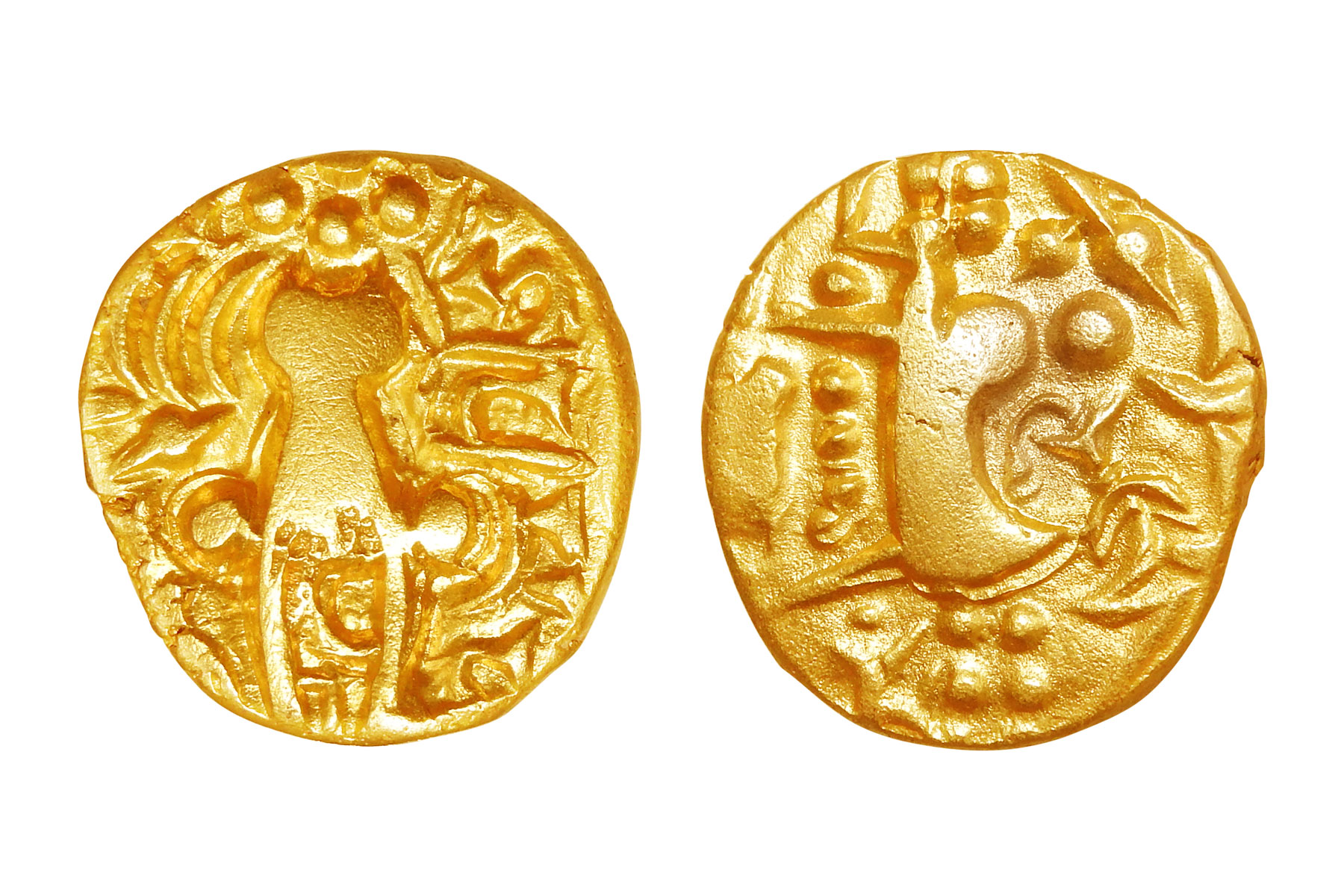
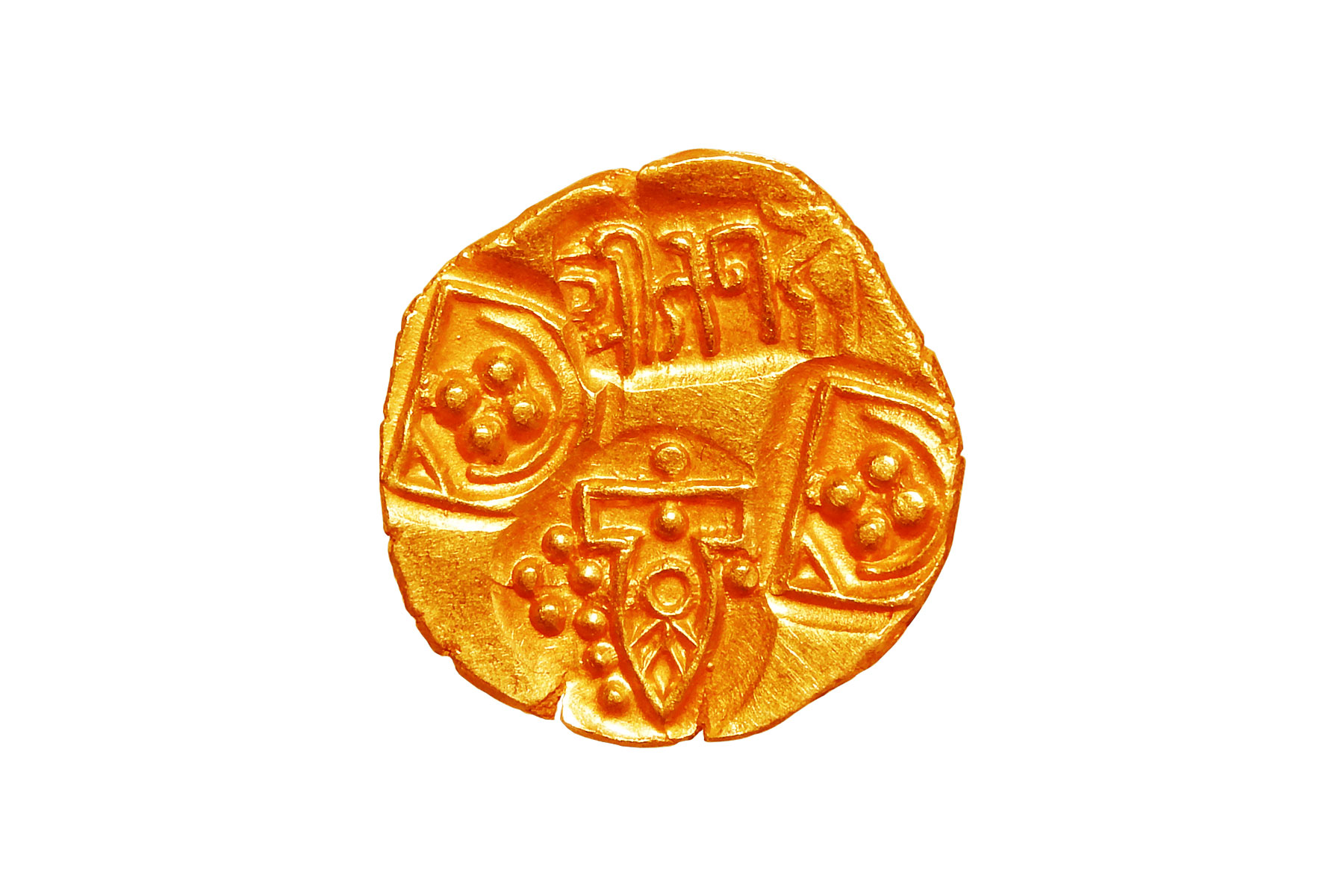
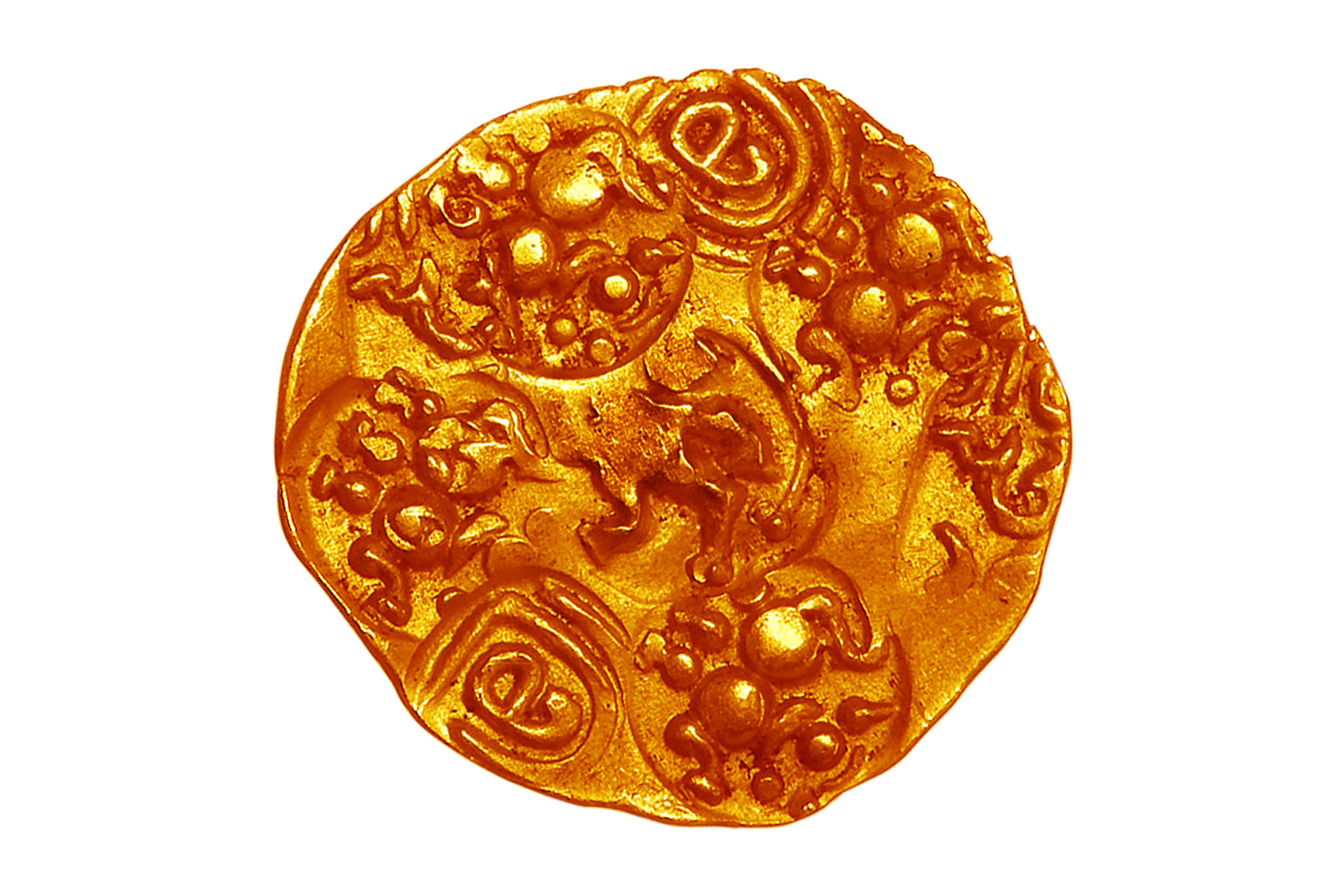
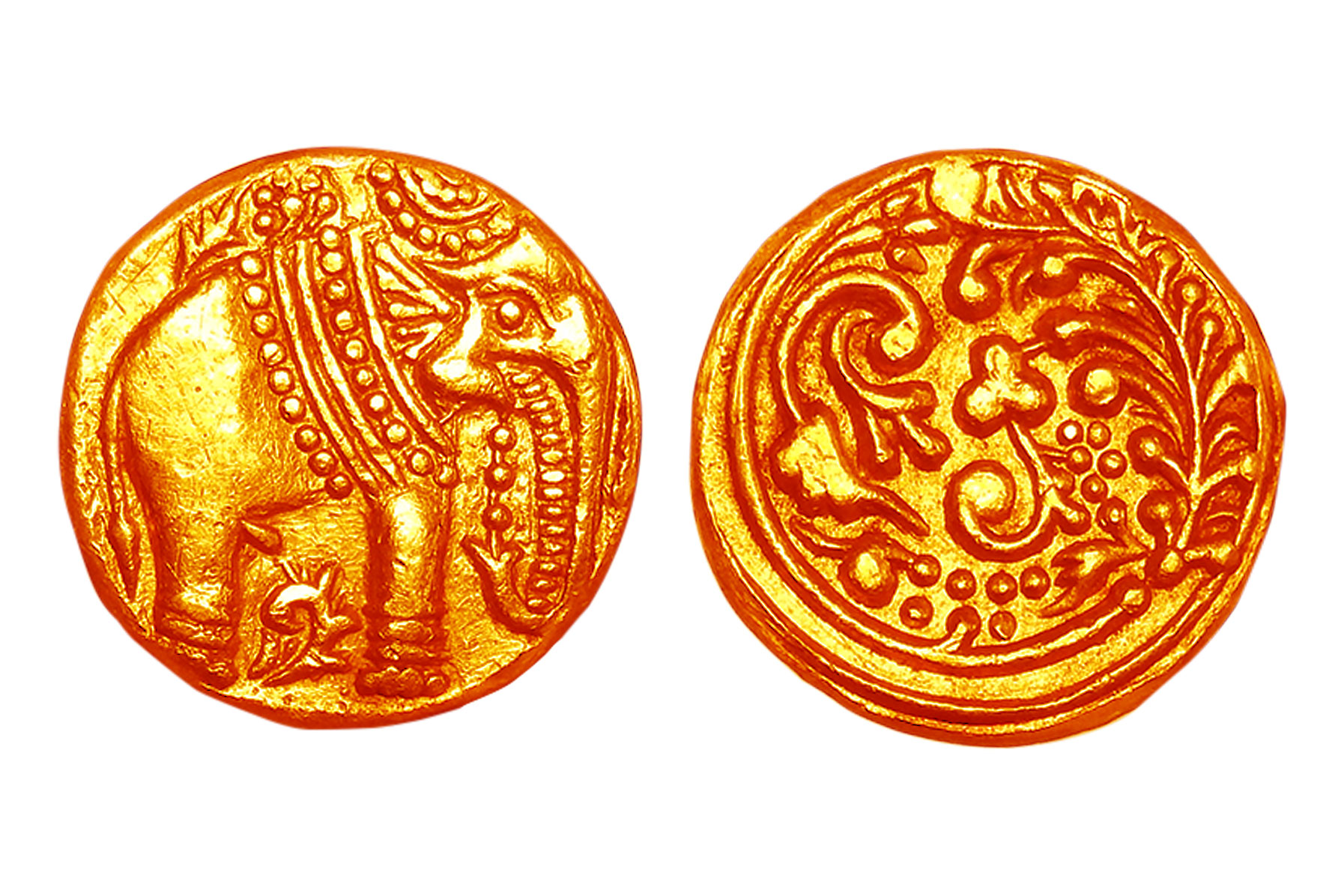
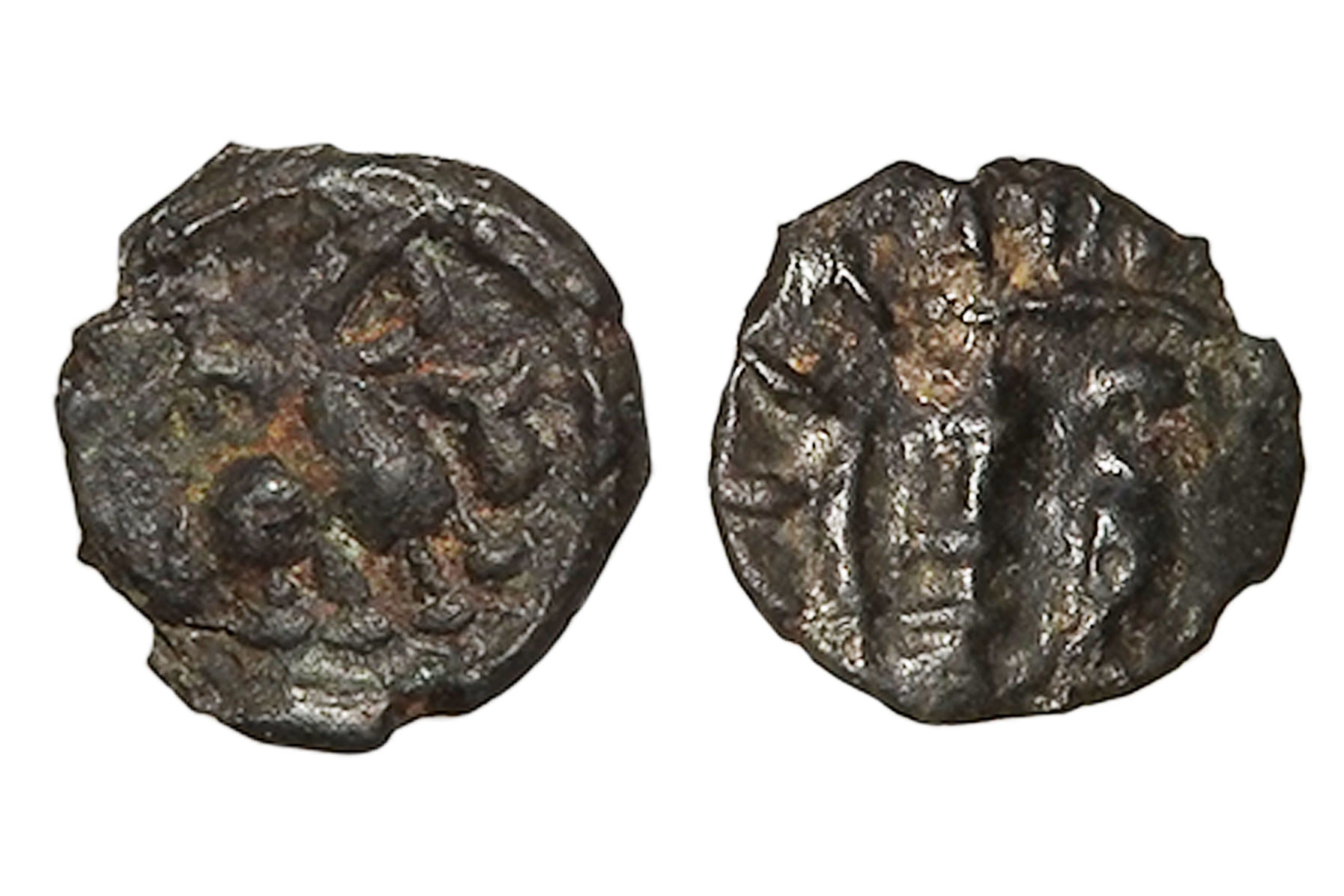
 WhatsApp
WhatsApp